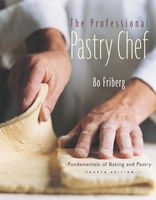Advertisement
Quince
Appears in
By Bo Friberg
Published 1989
Quinces have been growing in the Mediterranean for more than 4000 years; the trees are said to have originated in Greece. The Romans used the flowers and the “golden apple” itself for many purposes, including scenting honey and perfume and as a symbol of love. The long-lived trees are popular in gardens throughout Europe, both for their fruit and for their decorative quality. Besides the flower show of pink and white in the spring, the leaves have a bright autumn hue when the weather begins to get cold, and the twisted branches provide a spectacular silhouette in winter. Quinces have never gained this kind of recognition in America, possibly because this yellow-skinned fruit, which looks something like a cross between an apple and a pear, has a rather astringent, bitter, acidic flavor and numerous hard seeds throughout. Because quinces are high in pectin, they are prized for making jellies and preserves, but they are also excellent in pies, tarts, and custards. The most popular commercial variety is the pineapple quince, but Champion is also a good choice. In commercial nurseries, quince trees are used as dwarfing stock for grafting pears. The fruit will keep for months, stored in the refrigerator and wrapped in plastic. Quinces have a strong, sweet fragrance and help keep the air fresh when placed, unwrapped, in a closet or cupboard. You can add a few slices of raw quince to a cookie jar as you would apple, to soften hard cookies.


